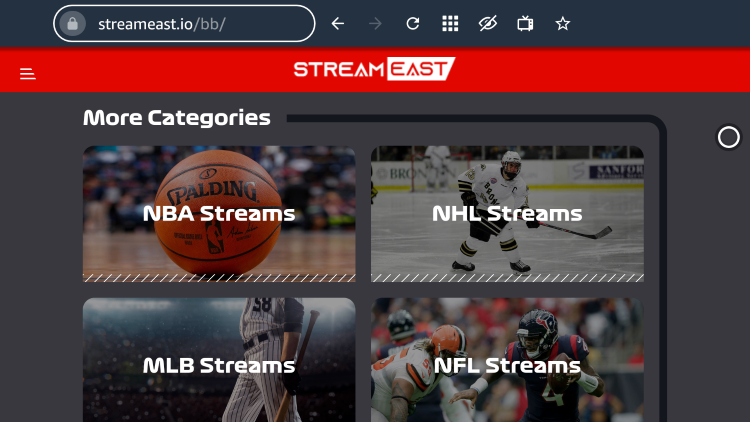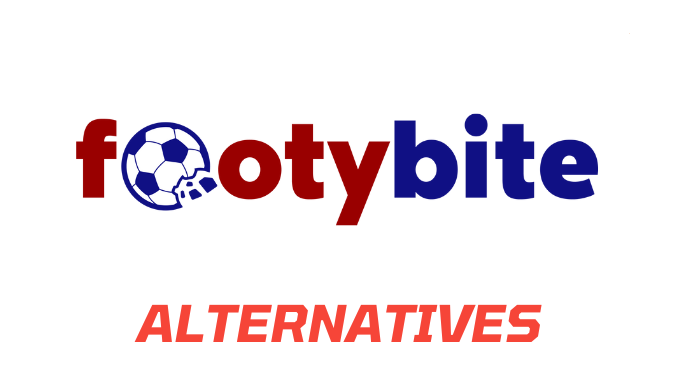We are searching for the Top 2023 Lightweight Linux Distributions. Do we know what Distros entails? Prior to delving farther into the subject, let us clarify what a distribution or distros are. To put it briefly, i+t stands for distribution. In informal IT jargon, the term “Linux operating system” (OS) refers to a particular Linux distribution or distributions of Linux that are constructed from the basic Linux operating systems.
There are numerous Linux distributions available for various uses, and no single distribution is suitable for all situations. Because of this, there are a variety of Linux distributions available; nonetheless, the top lightweight Linux distributions for 2023 are listed below:
2023’s Top 20 Lightweight Linux Distributions
1. Lubuntu

Its naming indicates that it is a lightweight Linux distribution OS, as the first letter “L” does. Even though it was not as resourceful and was made for older devices, it is a member of the Ubuntu user community and has continued to upgrade over time. It hasn’t compromised on any of its beloved apps.
This distribution has a strong emphasis on speed and energy economy yet being lightweight. The desktop interface of LXQT/LXDE is used by Lubuntu. It was released starting with Lubuntu 18.10 version and uses LXQT as the default desktop interface. Until late 2018, it ran on an LXDE desktop interface.
The minimum amount of RAM needed to operate the operating system has been dropped to 500MB in the most recent release of Lubuntu 19.04 – Disco Dingo. However, in order to guarantee seamless and trouble-free operation, the system requires a minimum of 1GB of RAM and an AMD K8 or Pentium 4 CPU for web services like Facebook and YouTube. This hardware requirement also aligns with the newest Lubuntu 20.04 LTS version. Despite all of this, it has maintained compatibility for its older hardware, including 32- and 64-bit versions.
In addition to a plethora of other helpful tools and utilities, Lubuntu comes with an abundance of applications, including a PDF reader, multimedia players, office programmes, an image editor, graphic apps, an internet browser, and an integrated software centre that permits the free download of additional applications. Lubuntu’s unique selling point is its continued compatibility with Ubuntu caches, which gives users access to thousands more packages that are simple to install through the Lubuntu Software Centre.
2. Linux Lite
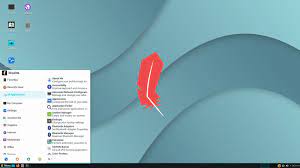
It is made with the intention of enticing people to switch to Linux from other Windows operating systems, such as Windows 7 or 10, as well as novice Linux users who are still using Windows XP on outdated hardware. It is an easy-to-use Linux operating system for beginners based on Long Term Support Version 18.04 Ubuntu LTS releases.
Despite being marketed as a lightweight Linux distribution, it really needs about 8 GB of storage, which might be fairly demanding on certain machines. This distribution requires a PC with a minimum of 1GHz CPU, 768MB RAM, and 8GB of storage to run; however, a PC with greater specifications, such as 1.5GHz CPU, 1GB RAM, and 20GB of storage, is required for optimal system performance.
It can be considered the least demanding distribution given the above system requirements, but it still has a tonne of useful apps and a tonne of popular features. With this distribution, you may readily access tools like the VLC media player for offline music and movie playback and Mozilla Firefox, which has built-in support for Netflix. In the event that you’re not satisfied with Firefox, you can instead install Chrome as an alternative.
Linux Lite also works with Thunderbird to fix any email problems, Dropbox to store files in the cloud, VLC to play music, LibreOffice to handle office work, GIMP to edit images and change colours, desktop tweaks to customise your desktop, a password manager, and a variety of other tools like Skype, Kodi, Spotify, TeamViewer, and many more. It also makes Steam accessible, which is compatible with a tonne of video games. It can also install on your hard drive or boot from a CD or USB stick.
On older computers, the Linux Lite OS runs more quickly thanks to the zRAM memory compression programme. It still offers support for the older Linux Distros’ 32- and 64-bit hardware versions. With the most recent version of Linux Lite 5.0 and compatibility for the default UEFI boot mode, this operating system has unquestionably matured quickly in the last few years and is now a powerful tool.
3. TinyCore Linux
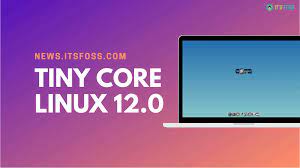
Robert Shingledecker created three different versions of this TinyCore distribution, each with unique features and system requirements. True to its name, the lightest distribution only contains the kernel and root file system—the essential components of an operating system—with a file size of 11.0 MB.
More apps were needed for this thin-shell distribution, thus TinyCore version 9.0—which had a few extra capabilities beyond the base desktop OS—was developed. It was 16 MB in size and offered the FLTK or FLWM graphical desktop interfaces.
With a larger file size of 106 MB, the third version—referred to as the CorePlus version—included a comparatively greater selection of helpful tools, such as different network window connection managers that allow access to a central file storage location and encourage the installation of a large number of helpful apps.
Numerous other features, including Terminal, a remastering tool, a text editor, wireless Wi-Fi support, non-US keyboard support, and much more, were also available with the CorePlus edition. With its three options, this lightweight Linux distribution can be a helpful resource for both novices and experts who utilise desktop and laptop computers.
On the other hand, if you are a professional who knows how to put together the required tools to have a satisfying desktop experience, you can also go ahead and give it a try. Anyone who simply needs a basic system to boot up and a wired Internet connection can work on it. To put it briefly, it’s a Flexi-tool for anyone interested in internet computers.
4. Puppy Linux

One of the first Linux distributions to be created by Barry Kauler is the Puppy Linux distribution. This Linux is fully developed independently and isn’t based on any other distribution. It’s not like some other distros and can be constructed using packages of Ubuntu, Arch Linux, and Slackware.
The user-friendly software is also known as “Grandpa Friendly Certified” due to its lightweight design. It is available in 32- and 64-bit versions, and PCs with UEFI and BIOS enabled can install it. Puppy Linux has many benefits, one of which is its small size, which allows it to run on any CD/DVD or USB stick.
You can easily install this distribution on your hard drive or any other medium by using the universal installers JWM and Openbox window managers, which are by default present on the desktop. It uses relatively minimal system resources because it doesn’t require much storage space.
There are no well-known preinstalled apps on it. Installing application packages is simple, and you can quickly install popular packages with the built-in Quickpup, Puppy Package Manager Format, or QuickPet programme.
Being extremely configurable allows you to have a wide range of apps or “puplets” that offer specific features or support, such as special-purpose puplets and non-English puppets, that will satisfy your needs and expectations.
Puppy Linux 8.0 and Ubuntu’s Caches are compatible with the Bionic Pup edition of Puppy Linux. The Ubuntu Bionic Beaver 18.04, on which the Bionic Pup edition is based, allows users access to the extensive software library of the parent distribution.
Several developers have taken use of this functionality and produced customised versions to cater to various requirements. It is impressive how many different apps there are available; for instance, the Home bank app assists with managing your funds, the Gwhere app catalogues discs, and there are graphical apps that assist with setting up a firewall and managing Samba shares.
In summary, Puppy Linux is widely used and preferred by many users over other distributions because it is lightweight, functional, and boasts excellent graphics, all of which let you complete more tasks more quickly. Puppy Linux requires a minimum of 256 MB of RAM and a CPU with a frequency of 600 Hz for its hardware.
5. Bodhi Linux
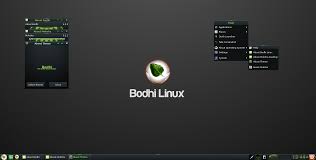
One such lightweight Linux distribution that may be installed on computers and laptops older than 15 years old is called Bodhi Linux. Bodhi Linux, often known as the Enlightened Linux Distro, is an Ubuntu LTS-based distribution. On a lighter note, it gives ageing PCs and laptops Moksha by utilising its Moksha operating system, which revitalises outdated computers.
The Moksha OS, which has a file size of less than 1GB, offers a decent user experience despite having few preinstalled applications. While 512MB RAM, a 1GHz CPU, and 10GB of hard drive space are advised for optimal performance, installing this Linux distribution requires a minimum of 500MHz CPU, 256MB RAM, and 5GB of hard drive space. The nice thing about this distribution is that it requires relatively little system resources in spite of its strength.
Moksha is an update to the well-liked Enlightenment 17 environment that fixes bugs and adds new features. You can customise the desktop layout by installing one of the many themes that Moksha supports.
Bodhi Linux is an open-source distribution that comes in four versions, the most recent of which being Bodhi Linux 5.1. 32-bit systems are supported by the standard version. The Hardware Enablement (HWE) version is a 64-bit operating system that supports kernel upgrades and current hardware, making it nearly identical to the Standard version. For extremely ancient computers that are over 15 years old and support 32-bit architecture, there is a Legacy version. The fourth version is the most basic; it allows customers to install only the apps that they really require and excludes all other capabilities.
Since the distribution is open-source, its developers constantly improve it in response to suggestions and needs from the user base. The finest feature is that the developers provide a forum where users can discuss their experiences with the OS and ask questions or get live help with technical issues. Additionally, the distribution offers a helpful Wiki page with a wealth of information on how to get started and maximise the functionality of the Bodhi Linux distribution.
6. Absolute Linux
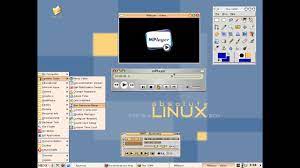
This lightweight, incredibly efficient, and simple to install distribution is intended for desktop users. It can swiftly absorb relatively old hardware and is based on the Slackware 14.2 distribution, which uses the lightweight IceWM window manager and comes preconfigured with the Firefox browser and LibreOffice suite. A few more software are also hosted there, including Google Earth, Kodi, GIMP, Inkscape, Calibre, and Chrome.
It is limited to 64-bit PCs that meet the minimum system requirements of an Intel 486 CPU or higher and 64 MB of RAM. Because the installer is text-based, it’s quite easy to follow. Nonetheless, Absolute Linux’s most recent version requires 2 GB of storage, and similar to most other distributions, its live version can be loaded straight from a CD or flash drive.
Its extremely committed development staff releases a new edition of the programme year, keeping it up to date. Thus, there is never a reason to worry about out-of-date software. This is this distribution’s main feature as well.
Use the standard version of Absolute Linux if you’re just starting out. However, if you’re an experienced user, you can customise it to meet your needs. For users who wish to construct their own customised distros, the developers offer a quick start guide. All that has to be done is add software packages to the core files or remove those that aren’t needed. The creators also provide customers many links to the relevant packages on their website so they can build their own customised distributions.
7. Porteus
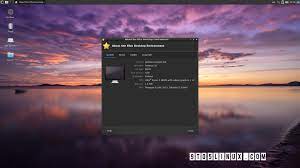
Fast Slackware-based desktop distribution Porteus is available for 32- and 64-bit systems. This distribution can operate straight out of the system RAM and boot up in around 15 seconds, requiring only 300 MB of disc space. Running from a detachable flash drive, like a CD or USB stick, only takes about 25 seconds.
With this distribution, downloading apps doesn’t require a package manager, unlike with conventional Linux distributions. Because it is modular, it includes pre-compiled modules that are free to download, save, and activate or deactivate with a single double click on the module. This distribution feature improves the devices’ system speed in addition to saving time.
With this distribution, the desktop interface is unable to create its own personalised ISO. Therefore, the distro gives the desktop interface access to a large range of software and drivers, including Openbox, KDE, MATE, Cinnamon, Xfce, LXDE, and LXQT, in order to download the ISO images. You can also utilise Porteus Kiosk as a safe alternative operating system for the desktop interface.
You can lock down and restrict access to everything by default using Porteus Kiosk, with the exception of its web browser, to stop users from downloading anything or changing any Porteus settings.
The kiosk is a great option among different devices for setting up web terminals because it also has the benefit of not remembering any passwords or browser histories.
Last but not least, Porteus is portable and modular across a range of devices. It works with a wide variety of computer brands.
8. Xubuntu

As the name suggests, Xubuntu is a combination of Ubuntu and Xfce. Ubuntu, a Gnome desktop operating system built on Debian, is mostly made up of free and open-source software, while Xfce is a lightweight, user-friendly desktop programme that runs smoothly even on outdated devices.
Because Xubuntu is a branch of Ubuntu, it has access to all of the Canonical archives. These archives, which contain programmes like the Adobe Flash Plugin, are the exclusive property of M/s Canonical USA Inc., a Boston, Massachusetts-based company.
Ubuntu works well with low-end hardware and is compatible with 32-bit desktop operating systems. It is designed for both novice and expert Linux users and provides access to a large collection of extra software. Visit the Xubuntu website, get the required ISO images, and start utilising this Linux distribution. A CD ROM programme in ISO 9660 format that is used to make installation CDs is called an ISO image.
You must make sure that your device meets the minimal functional requirements of 512MB of RAM for device memory and an AMD Anthlon or Pentium Pro central processing unit in order for this distribution to work. That does, however, require 1GB of device RAM for a complete setup. All things considered, Xubuntu is an excellent distribution that uses little system resources while providing amazing features and apps.
9. LXLE
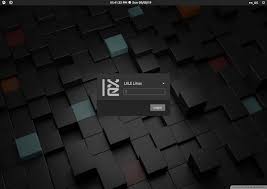
A lightweight desktop Linux distribution that is simple to use and built from Ubuntu LTS, i.e. Editions with Long Term Support. It is compatible with 32-bit computer hardware and is also referred to as the lightweight powerhouse.
It’s a visually appealing distribution with a simple LXDE desktop environment. It functions effectively on both new and old technology and offers long-term hardware support. This distribution places a strong emphasis on aesthetics, offering hundreds of wallpapers in addition to clones of Windows features like Aero Snap and Expose.
The main focus of this distribution is stability, and it works hard to bring the older computers back to life so they may be used as desktop computers. LibreOffice, GIMP, Audacity, and other feature-rich default apps are just a few of the many applications available to meet your everyday needs, including those for the internet, music, video games, office, and graphics.
With its user-friendly interface, LXLE offers a plethora of helpful add-ons, such as the Weather app for the Terminal and Penguin Pills, which serve as the precursor applications for multiple malware detectors.
The distribution needs a Pentium 3 processor, 8GB of disc space, and 512 MB of system RAM in order to function properly on any device. Nonetheless, a Pentium 4 CPU and 1.0 GB of RAM are advised.
This LXLE app’s developers have put in a lot of effort to make sure it is user-friendly for both professionals and amateurs and does not present any difficulties for a novice.




























